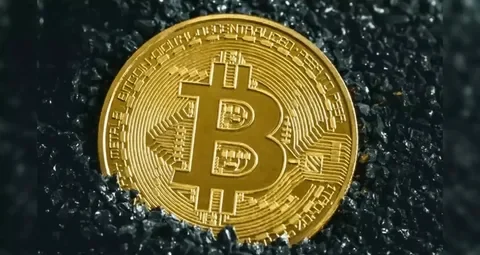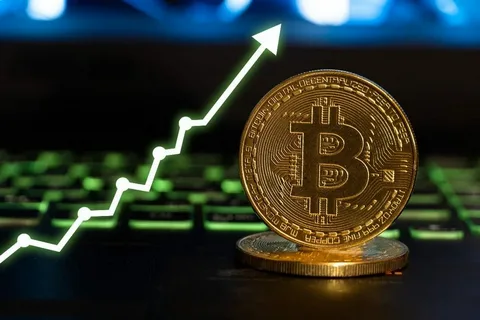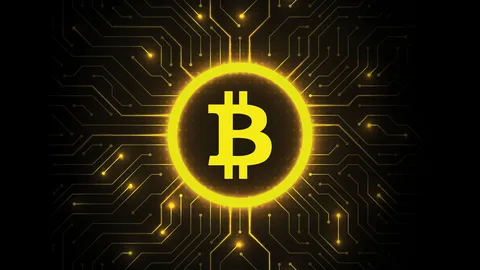The United States’ national debt has been on a relentless upward trajectory, fueled by years of deficit spending, interest payments, defense budgets, and welfare programs. From stimulus packages during the pandemic era to infrastructure spending and rising entitlement costs, the federal government’s spending has consistently outpaced its revenue.
In 2025, the debt crossed $37 trillion, a level that now equates to more than 120% of the country’s GDP. Traditional concerns about inflation, currency devaluation, and unsustainable fiscal policies have returned to public discourse. As the dollar’s long-standing dominance begins to face scrutiny, many investors and institutions have begun looking for alternatives—and Bitcoin is one of the most prominent.
Bitcoin’s Strategic Rise
While the U.S. printed more money and sold more Treasury bonds, Bitcoin surged—not just in price but also in legitimacy.
Bitcoin’s market capitalization rose above $2.1 trillion in mid-2025, a stark contrast to its lows just a few years prior. This rise wasn’t just due to retail speculation. A number of contributing factors signaled a deeper shift:
-
Scarcity Model: With only 21 million bitcoins ever to exist, Bitcoin offered a finite-supply alternative to fiat currencies, which can be printed indefinitely. The more the U.S. expanded its monetary base, the more attractive Bitcoin’s scarcity became.
-
ETF Approvals: The 2024 approval of several U.S.-based spot Bitcoin ETFs, including those from financial giants like BlackRock and Fidelity, paved the way for institutional capital to enter the market in a regulated manner. By early 2025, tens of billions of dollars had flowed into these products.
-
Corporate and Sovereign Holdings: Companies like MicroStrategy and Tesla maintained sizable Bitcoin positions, while El Salvador continued to promote its use as legal tender. These moves encouraged other small nations and global funds to consider Bitcoin as a hedge against fiat instability.

-
Parallel to Inflation Concerns
Even as U.S. inflation came down from its pandemic highs, long-term fears remained. Investors worried that growing interest payments on the national debt would eventually lead the Federal Reserve to monetize even more of the debt—effectively printing more money. Bitcoin, being independent of central banks, stood out as a hedge against that risk.
In previous decades, gold served that role. But Bitcoin’s digital nature, borderless storage, and ease of transfer gave it a distinct advantage in the modern, tech-driven world.
Bitcoin as a Macro Asset
Bitcoin’s correlation with traditional assets has also shifted. No longer just a volatile tech-like play, Bitcoin has started behaving more like a macro asset—sensitive to interest rates, liquidity, and inflation expectations.
Analysts now refer to Bitcoin alongside oil, gold, and Treasury yields when discussing global macroeconomic policy. This shift is a strong indicator of how the asset has matured over the last decade.
Policy Implications and Political Divide
Bitcoin rise in the context of U.S. debt has also entered political discussions. Some lawmakers view it as a threat to dollar supremacy, while others see an opportunity to embrace the technology to strengthen financial resilience.
There have been proposals to include Bitcoin in national reserves, and even to accept taxes in Bitcoin at state levels. Meanwhile, critics warn that embracing it too broadly could undermine monetary policy tools and create regulatory headaches.
Technological Growth and Adoption
On the technical front, the Bitcoin network has evolved. With the implementation of Taproot and other upgrades, its efficiency and privacy features have improved. Layer 2 solutions like the Lightning Network have made microtransactions faster and cheaper, opening Bitcoin to everyday use cases—not just store-of-value or speculation.
Additionally, innovations like Ordinals and smart contract layers on Bitcoin’s base chain have allowed NFTs and tokens to flourish within its ecosystem. These developments signal that Bitcoin is not just a financial hedge, but also a growing technological platform.

-
A Different Future?
As the U.S. debt continues to grow with no structural reform in sight, Bitcoin presents a narrative of alternative monetary stability. Whether or not it replaces traditional systems, it has already created parallel infrastructure for storing value, transacting globally, and resisting censorship.
For some, it’s a speculation. For others, a protest. But for a growing portion of the global population, it’s becoming a core component of their financial strategy—especially in a world where confidence in fiat currencies continues to waver.
Conclusion
Bitcoin’s rise during America’s deepening debt crisis tells a larger story: trust is shifting. As the U.S. continues to borrow at unprecedented levels, Bitcoin offers an escape hatch from the traditional system. Whether it ultimately becomes a dominant reserve asset or remains a complementary hedge, one thing is clear: in the era of trillion-dollar deficits, Bitcoin is no longer a fringe idea. It is part of the financial conversation—perhaps the most important one of our time.

















